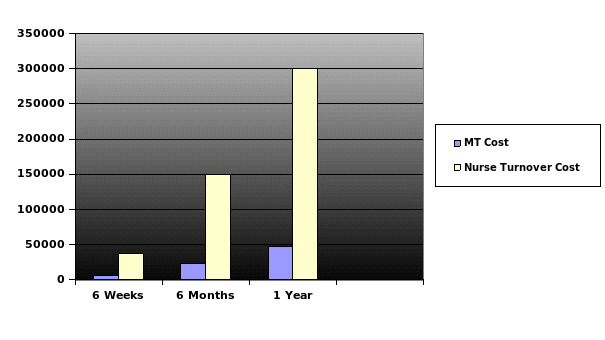Solution
Nurses may choose their profession for a great number of reasons: personal values and ethics attempts to be at service for the community, self-realization, development of positive social identity, etc. (Mullen, 2015). Driven by personal motives, nurses put the needs of other people before their interests and needs. It is possible to say that the lack of adequate work-life balance among nursing staff is significantly predetermined by the individual cultural and social backgrounds enclosing nurses’ beliefs, perceptions, and knowledge which, in turn, affect nurses’ attitudes to work and personal life. Based on this, one of the most effective solutions for resolving work-life balance problems is a cognitive intervention aimed at the development of awareness, and fulfillment of self-management practices.
Nowadays, the researchers suggest multiple approaches to the improvement of work-life balance. For example, in the study conducted by Fereday and Oster (2010), the authors primarily focus on the intervention of working time – increase in working hours’ flexibility, development of collaboration within the team, and the introduction of “protected time” for days-off (p. 313). However, it is possible to presume that since nurses’ professional behavior is largely influenced by the personal attitudes, the mere external control of the situation may not be of great use without the development of internal individual motivations and organizational culture supporting the change.
The cognitive intervention program, Motivation for Change (MT), focuses on educating nurses and administration staff members of medical settings about work-life balance issues including the impacts of work-life imbalance on individual psychological state, social well-being, family relationships, stress level, job satisfaction, and overall working performance. The involvement of administrative staff in the program course is important because managers’ and supervisors’ support and encouragement may foster intervention’s effects and contribute to the successful transition to positive change at both individual and organizational levels. In this way, it will be possible to reduce the impacts of nurses’ professional and moral obligation to sacrifice their time to work and care for others.
MT is initiated by the private-public service entity specialized in research and project development in health care, social work, and environment protection. The course is conducted with the participation of experienced life coaches, human resource practitioners, and counselors in psychology who have profound insight into a variety of health care problems and organizational issues. MT is the employer-sponsored program, and the involvement of high-level hospitals’ management is needed for the medical staff’s admission to the course.
During the training course, nurses and supervisors will develop motivation for the normalization of work-life balance, learn to evaluate different life areas, and cultivate new professional and personal values. MT is meant to encourage hospital staff for the implementation of self-management practices which can help them to improve the quality of life and social performance and, at the same time, decrease the level of their psychological and physical distress.
Benefits
MT is a low-intense training course, and its duration is six weeks. During these eight weeks of intervention, nurses and other members of organizational staff attend 1.5-hour group sessions two times per week. The cost of the total course is $600 per person. The costs for informational resources and materials are included in the price, and no additional expenditures are required.
The work-life imbalance is one of the major causes of nurses’ burnouts that lead to an increase in staff turnover. It is observed that hospitals lose up to $300.000 per year due to nurse turnover (Hunt, 2009). The nurse turnover costs include advertising and recruitment expenditures, training of new personnel, decreased quality of care, development of personnel’s distrust and dissatisfaction, decreased productivity, etc. (Jones & Gates, 2007).
While aiming at the improvement of job satisfaction and psychological well-being of staff, MT may contribute to the increase of organizational cost-efficiency by conveying the knowledge that can be applied for the improvement of working conditions and the consequent increase in staff retention.

Figure 1: The chart represents the expenditures for intervention courses (per 10 employees) and nurse turnover for the periods of six weeks, six months, and a year. While taking into consideration the program’s potential effects on the increase in nurses’ retention, the cost indicators demonstrate a high level of MT’s cost-efficiency in comparison to the potential losses provoked by staff turnover.
Conclusion
The level of nurses’ job satisfaction is strongly associated with the quality of medical service. In this way, the improvement of nurses’ work-life balance and overall hospital work environment contributes to the enhancement of health care services’ quality, the efficiency of medical treatment, and patients’ satisfaction with the received service. Thus, the investment into MT is of tremendous importance as the main purpose of the program is the development of social welfare and an increase in the quality of lives of all community members.
In case you would like to make your contribution to the improvement of health care service’s quality or receive more information about the program, you may contact MT’s public communication department via e-mail: [email protected].
Improvement of life quality and the community’s welfare is a social, organizational, and individual concern. The raise of awareness at the individual level through learning the relevant information about work-life imbalance issues and self-reflection may be regarded as the initial stage of the progress. However, to achieve sustainable balance and well-being, it is important to take action. Through the provision of the appropriate environment for practice and education, MT can help nurses and other members of medical staff to increase work efficacy and maintain the balance between social, personal, and professional roles.
References
Fereday, J., & Oster, C. (2010). Managing a work–life balance: The experiences of midwives working in a group practice setting. Midwifery, 26(3), 311-318. Web.
Hunt, S. (2009). Nursing turnover: Costs, causes, & solutions. Web.
Jones, C., & Gates, M. (2007). The costs and benefits of nurse turnover: A business case for nurse retention. Online Journal of Issues in Nursing, 12(3), 1-12.
Mullen, K. (2015). Barriers to work-life balance for hospital nurses. Workplace Health & Safety, 63(3), 96-99.